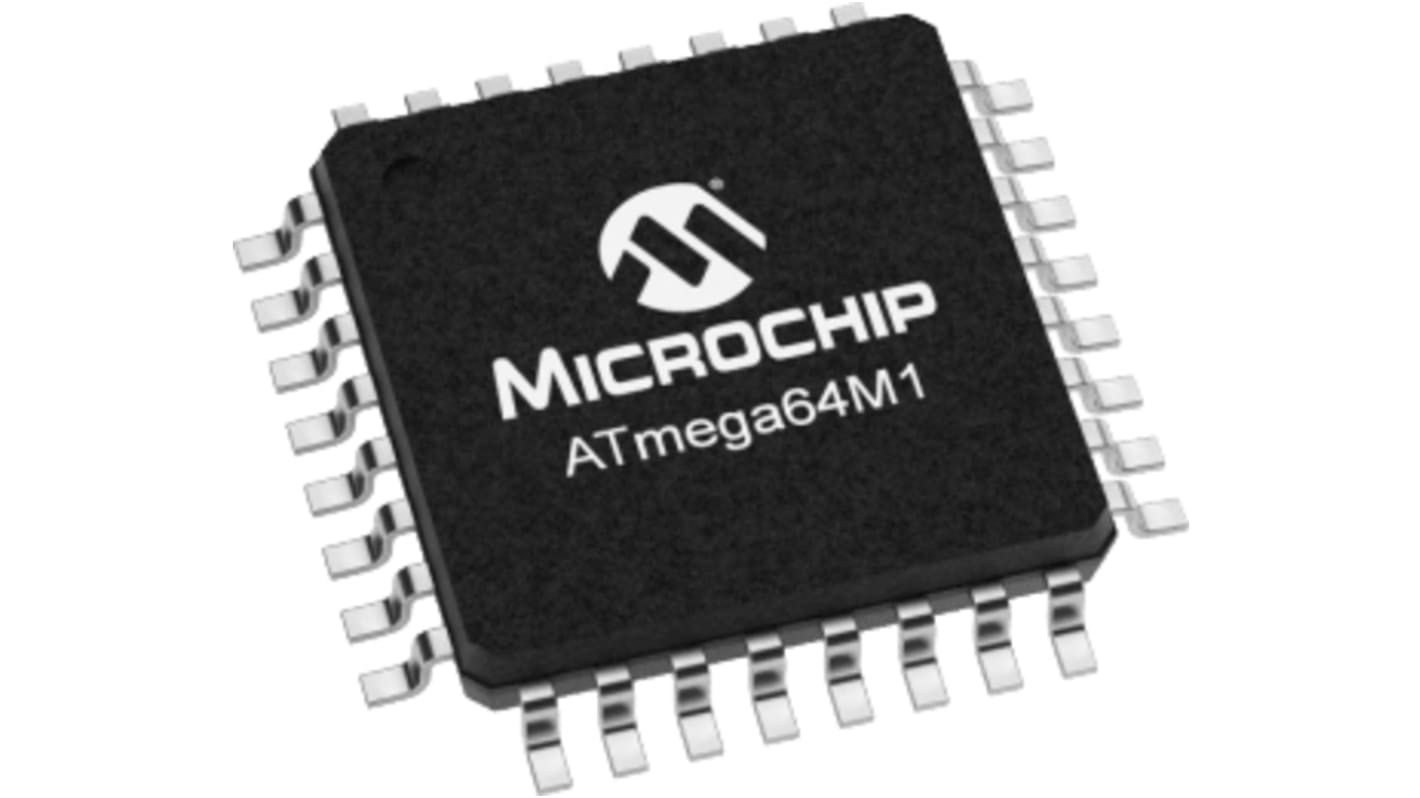Microchip ATMEGA64M1-AU, 8 bit AVR, ATMEGA64M1 Microcontroller, 16 MHz, 64kB FLASH, 32-Pin TQFP
- RS Stock No.:
- 146-8944
- Distrelec Article No.:
- 303-01-879
- Mfr. Part No.:
- ATMEGA64M1-AU
- Brand:
- Microchip

Subtotal (1 unit)*
£5.18
(exc. VAT)
£6.22
(inc. VAT)
FREE delivery for orders over £50.00
- Plus 9 unit(s) shipping from 22 December 2025
- Plus 874 unit(s) shipping from 29 December 2025
Units | Per unit |
|---|---|
| 1 - 24 | £5.18 |
| 25 - 99 | £5.02 |
| 100 + | £4.84 |
*price indicative
- RS Stock No.:
- 146-8944
- Distrelec Article No.:
- 303-01-879
- Mfr. Part No.:
- ATMEGA64M1-AU
- Brand:
- Microchip
Select all | Attribute | Value |
|---|---|---|
| Brand | Microchip | |
| Product Type | Microcontroller | |
| Series | ATMEGA64M1 | |
| Package Type | TQFP | |
| Mount Type | Surface | |
| Pin Count | 32 | |
| Device Core | AVR | |
| Data Bus Width | 8bit | |
| Interface Type | SPI, USART | |
| Program Memory Size | 64kB | |
| Maximum Clock Frequency | 16MHz | |
| RAM Size | 4.1kB | |
| Maximum Supply Voltage | 5.5V | |
| Analogue Comparators | 4 | |
| Minimum Operating Temperature | -40°C | |
| Maximum Operating Temperature | 85°C | |
| Length | 7.1mm | |
| Width | 7.1 mm | |
| Standards/Approvals | No | |
| Height | 1.05mm | |
| Minimum Supply Voltage | 2.7V | |
| Distrelec Product Id | 30301879 | |
| Number of Timers | 2 | |
| Instruction Set Architecture | RISC | |
| ADCs | 11 x 10 Bit | |
| Program Memory Type | FLASH | |
| Automotive Standard | No | |
| Select all | ||
|---|---|---|
Brand Microchip | ||
Product Type Microcontroller | ||
Series ATMEGA64M1 | ||
Package Type TQFP | ||
Mount Type Surface | ||
Pin Count 32 | ||
Device Core AVR | ||
Data Bus Width 8bit | ||
Interface Type SPI, USART | ||
Program Memory Size 64kB | ||
Maximum Clock Frequency 16MHz | ||
RAM Size 4.1kB | ||
Maximum Supply Voltage 5.5V | ||
Analogue Comparators 4 | ||
Minimum Operating Temperature -40°C | ||
Maximum Operating Temperature 85°C | ||
Length 7.1mm | ||
Width 7.1 mm | ||
Standards/Approvals No | ||
Height 1.05mm | ||
Minimum Supply Voltage 2.7V | ||
Distrelec Product Id 30301879 | ||
Number of Timers 2 | ||
Instruction Set Architecture RISC | ||
ADCs 11 x 10 Bit | ||
Program Memory Type FLASH | ||
Automotive Standard No | ||
Related links
- Microchip ATmega Microcontroller 64 kB Flash, 32-Pin TQFP
- Microchip ATmega Microcontroller 64 kB Flash, 64-Pin TQFP
- Microchip ATmega Microcontroller 8 kB Flash, 32-Pin TQFP
- Microchip ATmega Microcontroller 32 kB Flash, 32-Pin TQFP
- Microchip ATmega Microcontroller 128 kB Flash, 64-Pin TQFP
- Microchip ATmega Microcontroller 32 kB Flash, 44-Pin TQFP
- Microchip ATmega Microcontroller 16 kB Flash, 44-Pin TQFP
- Microchip ATmega Microcontroller 64 kB Flash, 100-Pin TQFP
